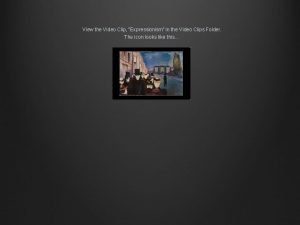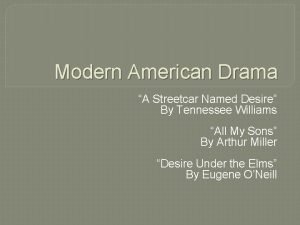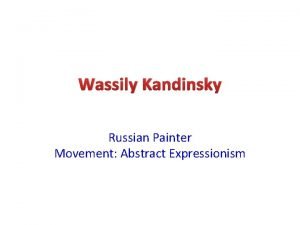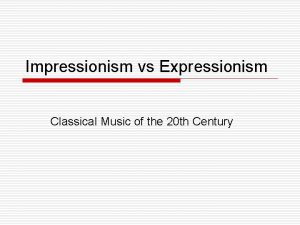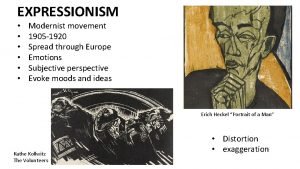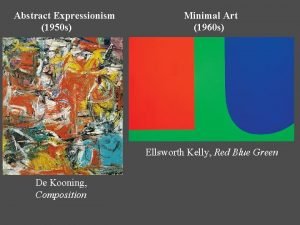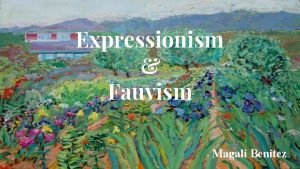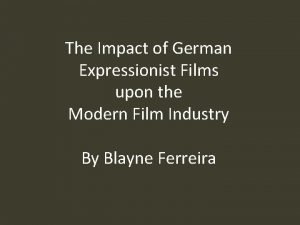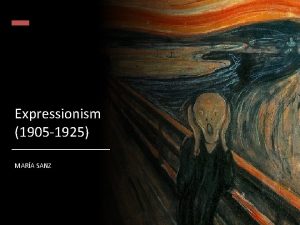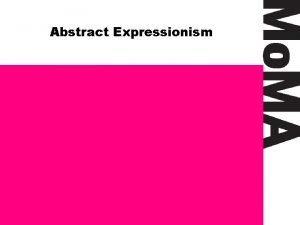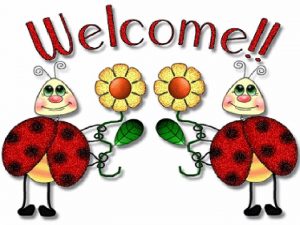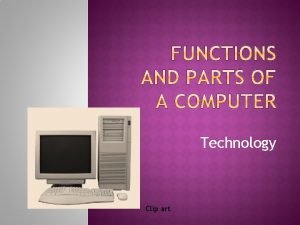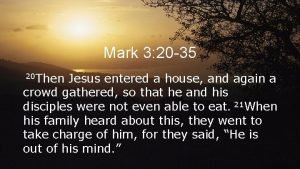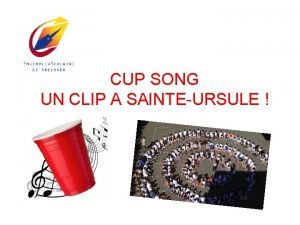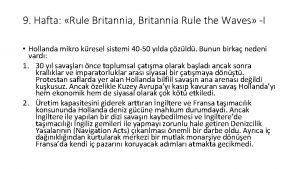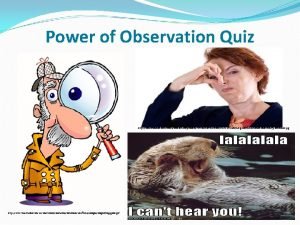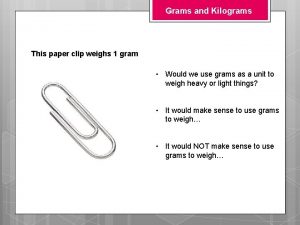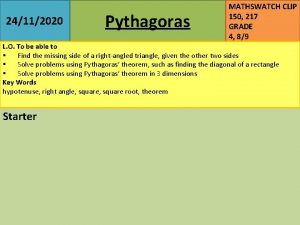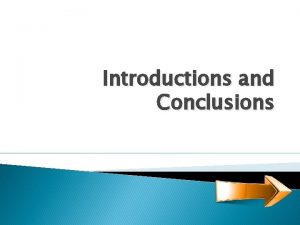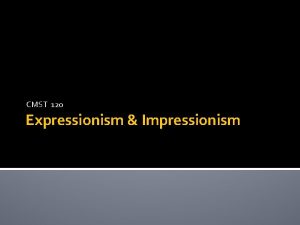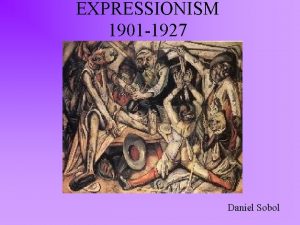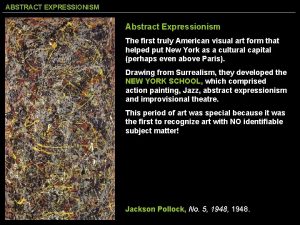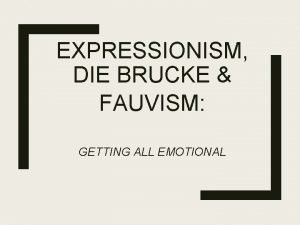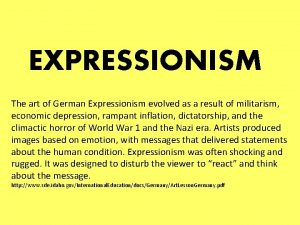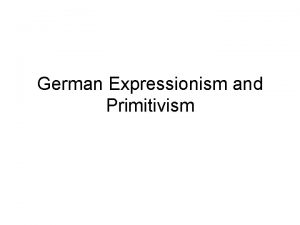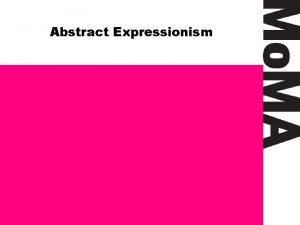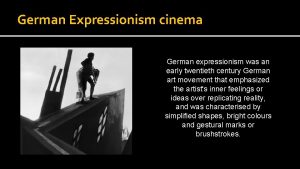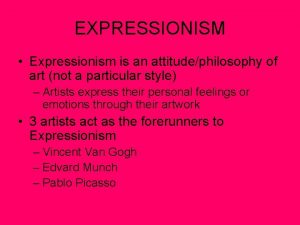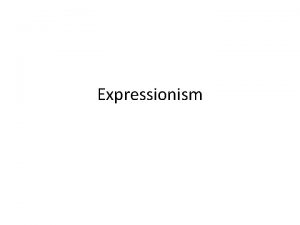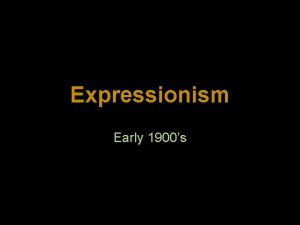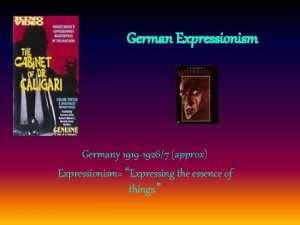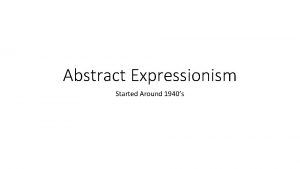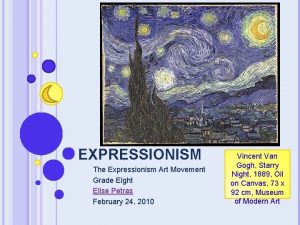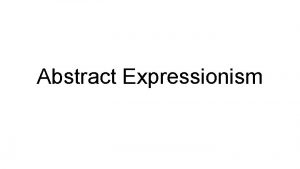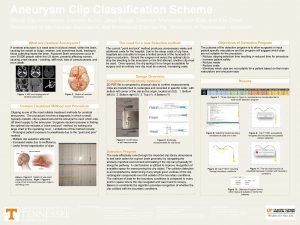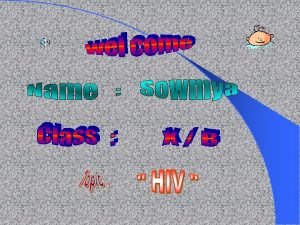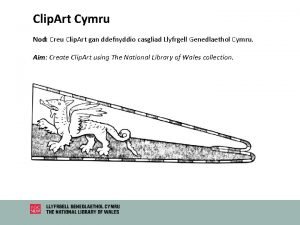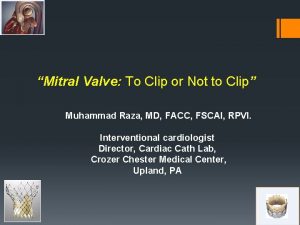View the Video Clip Expressionism in the Video























- Slides: 23

View the Video Clip, “Expressionism” in the Video Clips Folder. The icon looks like this…

German Expressio

Gustav Klimt Death & Life 1908

View the Video Clip, “WW 1 1914 - 1918 Summary” in the Video Clips Folder. The icon looks like this…

How could such devastation NOT affect every aspect of society? View the Video Clip, “WW 1 - Hell in the Trenches!” in the Video Clips Folder. The icon looks like this…

Die Brucke: • Started as a kind of newspaper publications by Kirchner, Schmidt-Rottluff and Heckel to represent a ‘bridge’ into revolution and modernity. Other artists from the movement included Emil Nolde, Max Pechstein and Otto Mueller. • They criticized social conditions and emphasized the message of a work over the formal elements. • The art was personal and individual. It was angst-ridden by hate, jealousy etc. Bright primary colours progressively darkened towards a somber palette. • They often used contrasting colours to symbolize conflicts in life. • Dark, outlines shapes were simplified and distorted and the works seemed unfinished. • Figures were angular and almost jagged. • The compositions were crowded and perspective flattened. • Brushwork was free and ‘barbaric. ’ The group was dissolved at the eve of World War I.

Edvard Munch The Dance of Life 1900

James Ensor The Entry of Christ into Brussels 1889

George Roualt It’s hard to live… 1922

Max Beckman Self Portrait 1944

Egon Schiele Nude Self-Portrait 1910

Ernst Kirchner Berlin Street Scene 1913

Edvard Munch The Cry 1893

The Death of Marat 1905

James Ensor Portrait of the Artist surrounded by masks 1899

Skeletons fighting for the body of a hanged man 1891

Kirchner Street 1907

Der Blaue Reiter: • (1911 -1914). • This group was founded by Kandinsky and Marc (and later Macke) and also rose out from a publication of essays before the war. • Their aim was to express inner spirituality through a variety of shapes. • Themes were often lyrical, romantic, spiritual and abstract and they did not comment directly on society like Die Brucke. • They experimented with the emotional use of colour, especially bright, pure colours. Shapes were distorted to express emotion and brushwork was used to show the process in the painting. • Marc, in particular, contrasted the sordid reality of mankind with the natural beauty of the animal world and sought harmony. • Kandinsky was a Russian artist who was the founder of abstraction (works with no particular subject matter. ) He believed that art was like music evoking powerful emotions in a viewer.

Der Blaue Reiter Wassily Kadinsky 1911

“Blue Horses” (1911) by Franz Marc"

An MTV advert in the German Expressionist Style… View the Video Clip, “German Expressionist MTV 2 Commercial” in the Video Clips Folder. The icon looks like this…

View the Video Clip, “The German Expressionism exhibit at Mo. MA” in the Video Clips Folder. The icon looks like this…

Links to South African Art: Penny Siopis, “The Shame Series” (2002) Penny Siopis is a South African artists who has become interested in biography, race and gender in expressions of the human Tableau. Her “Shame Series: challenges abuse in society and can be linked to Expressionism through her symbolic use of colour and distorted figures.
 Expressionism video
Expressionism video Expressionism in a streetcar named desire
Expressionism in a streetcar named desire Expressionism death of a salesman
Expressionism death of a salesman Wassily kandinsky interesting facts
Wassily kandinsky interesting facts Is pierrot lunaire impressionism
Is pierrot lunaire impressionism Portrait of emy
Portrait of emy Minimal art 1960
Minimal art 1960 Impressionism vs expressionism
Impressionism vs expressionism Magali benitez
Magali benitez German expressionist directors
German expressionist directors Expressionism (1905-1925)
Expressionism (1905-1925) David smith australia sculpture
David smith australia sculpture Watch a clip and answer questions
Watch a clip and answer questions Cpu clip art
Cpu clip art Mark 3:20-34
Mark 3:20-34 Chanson gobelet clip
Chanson gobelet clip Rule britannia sound clip
Rule britannia sound clip Stage clips microscope function
Stage clips microscope function Msn quiz
Msn quiz What weights 1 gram
What weights 1 gram Jamestown clip art
Jamestown clip art Mathswatch pythagoras answers
Mathswatch pythagoras answers Thai singer clip
Thai singer clip Introductions clip art
Introductions clip art
